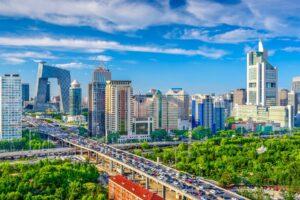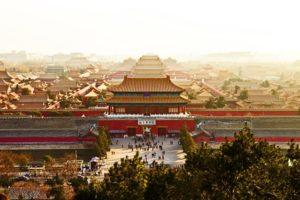Fodor's Expert Review Great Wall at Juyongguan
Juyongguan is a quick, easygoing alternative for those not willing to blow a whole day traveling to Mutianyu or Jinshanling, or brave the more testing, unrestored sites such as Jiankou. It's the part of the wall that runs closest to Beijing and once guarded a crucial pass to the city, repelling hordes of Mongol and, latterly, Japanese invaders. The section also lies not far from Badaling, essentially acting as an overflow for its oversubscribed neighbor. It certainly loses nothing in the comparison, boasting similarly impressive views but with far less abrasive crowds. However, Juyongguan has been heavily restored and does feel a little sterile and commercial as a result.
The main attraction here is the Cloud Platform (or "Crossing Street Tower"), which was built in 1342 during the Yuan Dynasty. In appearance, it now resembles a rather squat Arc de Triomphe. The three white Tibetan stupas that originally sat atop it were destroyed during the early Ming period,... READ MORE
Juyongguan is a quick, easygoing alternative for those not willing to blow a whole day traveling to Mutianyu or Jinshanling, or brave the more testing, unrestored sites such as Jiankou. It's the part of the wall that runs closest to Beijing and once guarded a crucial pass to the city, repelling hordes of Mongol and, latterly, Japanese invaders. The section also lies not far from Badaling, essentially acting as an overflow for its oversubscribed neighbor. It certainly loses nothing in the comparison, boasting similarly impressive views but with far less abrasive crowds. However, Juyongguan has been heavily restored and does feel a little sterile and commercial as a result.
The main attraction here is the Cloud Platform (or "Crossing Street Tower"), which was built in 1342 during the Yuan Dynasty. In appearance, it now resembles a rather squat Arc de Triomphe. The three white Tibetan stupas that originally sat atop it were destroyed during the early Ming period, only to be replaced with a Buddhist Tai'an temple, which was later toppled by fire in 1702. Today, carvings on the inner portal depicting the Four Heavenly Kings (Buddhist gods who defend the four compass points) and some elegant script work make for fascinating viewing on the way up the pass.
The trip by car from central Beijing to Juyongguan should cost around Y450 for the round trip and takes about an hour. By public transportation, take Line 13 on the subway to Longze. Exit the station and walk to the bus stop across the street to take Bus 58 (Y12) to Shahe; take bus 68 at the same stop to Juyongguan Gongjiaochang and walk to the wall from there. The trip takes about 2½ hours.
READ LESS







